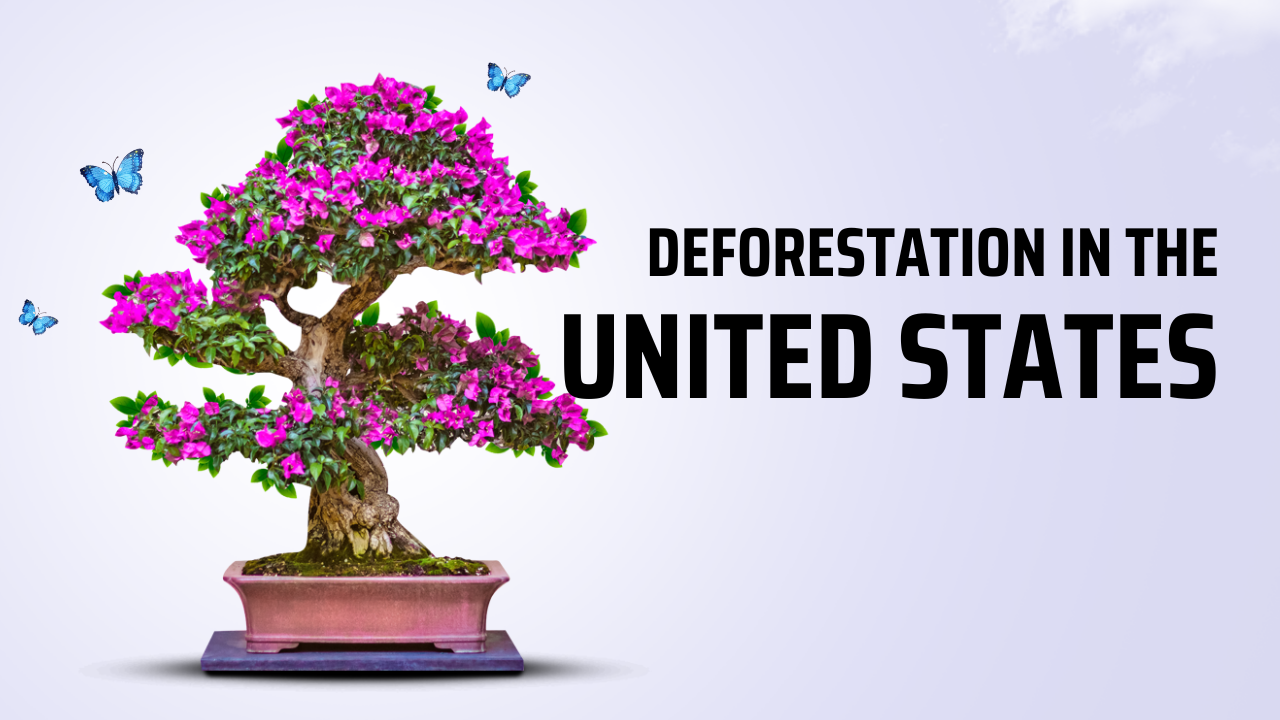Deforestation in the US: An In-Depth Analysis of Environmental Impacts and Conservation Efforts
Introduction
Deforestation is a critical issue that demands immediate
attention. In the United States, the loss of forests has far-reaching
consequences for both the environment and society. This article delves into the
topic of deforestation in the US, exploring its causes, environmental impacts,
economic ramifications, and ongoing conservation efforts. By shedding light on
this pressing issue, we aim to raise awareness and inspire action to protect
our forests.
Understanding Deforestation
Deforestation refers to the permanent removal of trees from
forests, leading to the conversion of forested areas into non-forest land.
Multiple factors contribute to deforestation, including logging, urbanization,
agriculture expansion, and infrastructure development. By examining historical
trends, we can gain insight into how deforestation has evolved over time in the
US.
Deforestation Hotspots in the US
The US is home to several deforestation hotspots, where the
loss of forests is particularly pronounced. In the Pacific Northwest, extensive
logging and the timber industry have had a significant impact on forested
areas. The Southeastern US has witnessed the conversion of forests for
agricultural purposes, leading to substantial deforestation. In Alaska,
logging, mining, and road construction pose threats to pristine forests. Urbanization
and recreational activities in the Rocky Mountains and logging for paper
production in the Great Lakes region are also contributing factors.
Environmental Consequences
The environmental consequences of deforestation are profound.
Soil erosion and degradation occur when trees are removed, destabilizing
ecosystems and compromising soil fertility. Deforestation also results in the
loss of habitat for countless plant and animal species, threatening
biodiversity. Moreover, the removal of trees leads to increased greenhouse gas
emissions, exacerbating climate change. Additionally, deforestation disrupts
water cycles and hydrological systems, affecting local ecosystems and
communities.
Economic Impact
The logging industry plays a significant role in the US
economy, providing employment opportunities and generating revenue from timber
production. However, the costs of deforestation should not be overlooked. Local
communities that rely on forests for their livelihoods may face adverse
economic consequences due to the depletion of natural resources. Exploring
sustainable economic alternatives to deforestation is crucial for long-term
prosperity.
Legal Framework and Conservation Efforts
Deforestation in the US is governed by a legal framework that
includes federal laws and regulations. National parks and protected areas serve
as vital conservation spaces. Numerous forest conservation organizations and
initiatives actively work towards preserving forests and promoting sustainable
forest management practices. By understanding the legal context and
conservation efforts, we can gauge the progress made in combating
deforestation.
Indigenous Communities and Deforestation
Indigenous communities have a deep-rooted connection to
forests, both culturally and spiritually. The impact of deforestation on
indigenous peoples is significant, as it threatens their way of life and
traditional knowledge systems. Despite these challenges, many indigenous
communities are at the forefront of conservation efforts, leveraging their
ancestral wisdom and advocating for their land rights.
Corporate Responsibility
Corporations have a role to play in addressing deforestation.
Some industries contribute to deforestation through unsustainable practices.
However, an increasing number of companies are embracing sustainable sourcing
and certification programs, ensuring that their supply chains are free from
deforestation. Corporate social responsibility initiatives aim to mitigate the
environmental impact of business operations and support forest conservation.
Government Policies and Initiatives
Both the federal and state governments in the US have
implemented policies and initiatives to combat deforestation. These range from
forest conservation policies at the federal level to state-level regulations
and programs that focus on sustainable land use and protection. Public-private
partnerships are also instrumental in promoting reforestation and implementing
sustainable forest management practices.
Innovative Solutions
In the face of deforestation challenges, innovative solutions are emerging. Forest restoration and reforestation techniques aim to replenish degraded areas and rebuild forest ecosystems. Agroforestry practices integrate trees with agricultural systems, promoting sustainable farming while conserving forests. Technology plays a crucial role in monitoring and combating deforestation, with remote sensing and satellite imagery enabling real-time forest monitoring. International collaboration and knowledge sharing further contribute to effective strategies in combating deforestation.
Summary and Key Findings
In summary, deforestation in the US poses significant
environmental and economic challenges. The loss of forests impacts ecosystems,
biodiversity, and climate change. However, concerted efforts are being made to
address this issue. Through legal frameworks, conservation initiatives, and
corporate responsibility, progress is being made in protecting forests.
Government policies and innovative solutions provide hope for the future. It is
crucial for individuals to recognize the importance of forest conservation and
actively contribute to sustainable practices.
Frequently Asked Questions (FAQs)
1. What is the main cause of deforestation in the US?
Deforestation in the US is primarily driven by logging,
urbanization, agriculture expansion, and infrastructure development.
2. How does deforestation affect climate change?
Deforestation contributes to climate change by releasing
stored carbon dioxide into the atmosphere, increasing greenhouse gas emissions.
3. What are the consequences of deforestation on local
communities?
Local communities dependent on forests may face economic
hardships due to the depletion of natural resources. Additionally,
deforestation can disrupt their way of life and cultural traditions.
4. What are the current government policies to combat
deforestation?
The US government has implemented forest conservation
policies at the federal level, alongside state-level regulations and programs
promoting sustainable land use and protection.
5. How can individuals contribute to forest conservation
efforts?
Individuals can contribute to forest conservation efforts by
supporting sustainable products, reducing paper consumption, participating in
reforestation initiatives, and advocating for stronger environmental policies.
By understanding the impacts of deforestation and the ongoing
efforts to combat it, we can collectively work towards a more sustainable
future, where forests are protected and cherished for generations to come.








0 Comments